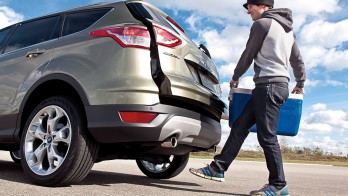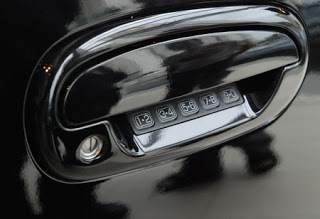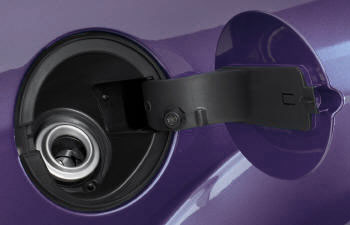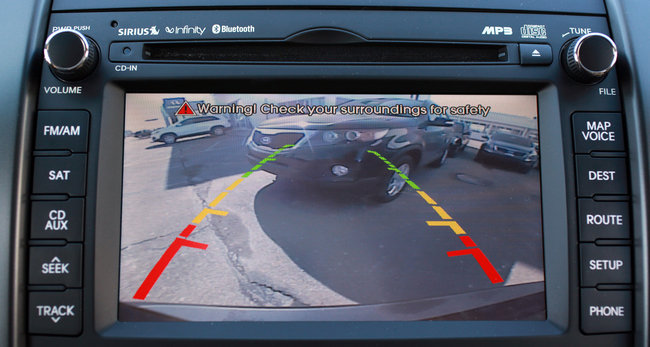A recent survey by Cisco suggests that automotive UX is lagging behind the technological desires of vehicle owners, but there have been some well-designed successes in the past couple of decades.
I haven’t tested every single one of these with each OEM’s (that’s Original Equipment Manufacturer) target customers to see if, in true user-centered design fashion, they have met the needs of their customers (although I have for some). These rankings are based upon informed, heuristic analysis rather than comparative data. They are weighted first and foremost by simplicity of usage, then by frequency of use, safety-related impact, and the costs (both in opportunity and financial) to enjoy the benefits. So without further ado, here are my top ten automotive UX successes.
10: Dynamic Radio Volume
I’m not sure I fully appreciated this hidden algorithm until my current vehicle didn’t have it (“Ya don’t know what ya got ‘til it’s gone”). In essence, the radio receives a speed pulse from elsewhere in the vehicle (e.g. engine, antilock brakes) and when the vehicle speed goes up, the radio volume compensates to overcome the additional road noise. The genius of this software-enabled feature is the user doesn’t need to do anything to enjoy an improved experience. In fact, I’ll bet half the readers whose vehicles have this feature buried within their entertainment system have no idea it existed until just now.
9: Auto-Liftgate
Ever had your hands full of groceries, firewood, baseball equipment or … well … you name it. Of course you have! And you cannot call out to HAL to open the exterior portal, so instead you fumble, you rearrange, you fumble some more, and eventually you have to put everything down.
This system allows you to stick your foot under the rear bumper and, whallah voila, the liftgate lifts itself. This nifty feature would be higher on the list if A) such fumbling were a more common use case, and B) the buyer weren’t forced to choose between keyfobs and the auto-liftgate (a.k.a. opportunity cost).
Stick your foot under the rear bumper and, voila, the liftgate lifts itself
8: Adaptive Cruise Control
Cruise control could argue itself on to this list, but it was invented in 1945, making it too ancient to be considered a modern technology. That said, Adaptive Cruise Control (ACC) was invented in the late ‘90s and senses vehicles ahead as to automatically slow to the driver’s prescribed headway. The controls for these systems are typically simplistic, and the additional sensing allows the driver to avoid braking, resuming, canceling, etc. in the midst of modest traffic. Despite the elegance of this feature, ACC doesn’t rocket up the list since A) it is mostly a convenience feature, and B) works best in non-urban, highway situations. Yeah, yeah … some say ACC is a safety-related feature since it decreases traffic disturbances and, therein, accidents, but not enough to vault this apparatus to the top of the list.
7: Exterior Keypad
It is estimated that 5% of the population gets locked-out of their vehicle in a given year, which has not only spawned associated locksmith and telematics businesses but also parasitic, phony companies around the country bilking stranded travelers.
The exterior keypad helps the owner recover his keys in the accidental situation and enables other use cases where locking the keys in the car is intentional. For instance, you drive your sport utility vehicle to a triathlon and don’t want to leave your keys in the bike while you’re in the water. Solution? Simple. Lock them in the car. The nifty little keypad will let you in later. And you want to unlock all of the doors from the outside? Hit one extra key and you’ve enabled entry for all passengers.
6: No Gas Cap
I cannot begin to estimate the number of times I have struggled in the cold to properly orient, secure and twist the gas cap while attempting to avoid the gasoline spew that drenched a portion of the intractable cap. Annoying! Not to mention, I’ve had a few embarrassing moments when random motorists roll down their window to inform me that my gas cap was never reaffixed. Ugh!! Well, mess no more. Over a century after the car was invented, a gas-capless vehicle was launched. Just put the nozzle into the receptacle and pump. Easy peasy trigger-squeezy.
5: Destination Download
Among the greatest complaints about infotainment systems are the difficulties with the navigation system: it’s difficult to find a destination, the database is immediately dated, you cannot enter a location while driving, and most times there isn’t traffic information incorporated into the route. The solution that erases all of those complaints: talk with a live advisor, confirm the desired destination (without having to pull over), and watch as the route information is downloaded to your vehicle.
In addition, this climbs the list since a 2011 study compared five different ways of doing navigation—printed directions, mobile phone, Portable Navigation Device, embedded navigation, and destination download—and found the highest user satisfaction and driver attention was from the destination download system (*It’s worth noting that the worst driver distraction comes when you remove all technology and force drivers to go old school with printed directions!)
4: Airbag Call
If you’ve listened to five minutes of radio over the past eighteen years, then surely you’ve heard a distressed driver talking with an emergency advisor after his/her airbag deployed and, without any effort in such a difficult situation, getting remote assistance. Simple. Safety-related. Motherhood and apple pie. This would be at the top of the list if it weren’t for A) the monthly charge required to assure a call shall be made (rather than relying on a likely-disconnected Bluetooth phone that assuredly flew around the cabin), and B) the proliferation of cellphones in the urban community making the advisor’s intervention later than all of the good Samaritan calls to 911 or 112 (Europe). That said, one rollover in a rural area and all that cabbage you paid will seem like chump change.
3: Rear-View Sensors & Camera
If it weren’t enough that these combined technologies make the uncomfortable tasks of backing up the car much easier (especially for older drivers with stiffer necks) and helps to avoid untold damages in bumper-to-yellow-painted-posts, it saves lives. The regulators that have now mandated rear-view cameras as standard equipment for new cars in 2014 estimate that nearly half of all deaths each year—228 in the U.S. with approximately 100 of those deaths being kids under the age of five—might be avoided by helping drivers see what’s behind the vehicle more effectively. Add in that nearly half of the 17,000 U.S. people who are injured each year might be spared makes this ingenious reuse of the centerstack screen (or mirror) a seamless user experience.
2: Rain-Sensing Wipers
The first windshield wipers were invented in 1903 and were purely manual. In 1919, along came the automatic wipers which weren’t supplanted until the late 60’s as immortalized in the movie, Flash of Genius. Rain-sensing wipers were first introduced in 1966, but the sensitivity of the electrical contact made them unreliable and a poor user experience. In the late 90’s, one supplier finally devised the current system where optical sensors detect moisture and increase the speed of the wipers. Let’s focus on why this is so crucial: it has just improved the driver’s ability to complete the primary task of driving when difficult conditions just went from gray to black. There’s little-to-no intervention required by the driver, making the system quite simple, and lives are assuredly saved by this intercession at the worst of times.
1: Tire Inflation Assistance
A new federal study shows that under-inflated tires triple your likelihood of being in an accident, while decreasing your fuel efficiency by 3.3%. Why? Low tire pressure influences skidding, contributes to blowouts, and increases stopping distance. In 2000, to address the leading root cause of under-inflated tires—drivers not knowing the tires were under-inflated—the National Highway Traffic Safety Administration (NHTSA) mandated Tire Pressure Monitoring Systems (TPMS) as standard equipment by 2003-2006. Yet the aforementioned federal study sampled vehicles from 2005-2007, thereby suggesting a possible second cause. One theory: drivers either don’t notice or ignore the warning in their vehicle’s display, making a vehicular diagnostics email a valuable assistant in the fight.
In fact, one telematics provider proved such a reminder based upon the vehicle sending sensor data to a server and eventually to the owners’ email significantly shaped behavior and avoided repeat offenders the following month. All of that said, though, many drivers either do not have the handheld pressure sensor (used when outside the parked vehicle) or know when to stop pumping air. This is why the 2013 technology that tops my list is the chirping of the horn when the tire has been sufficiently inflated. Why? It doesn’t require the owner to monitor the current pressure whilst remembering the ideal pressure. It’s just simple. Pump ‘til it chirps, and then go about your life. Super easy, and both life-saving and money-saving.
Conclusion
I know, I know. Some of you will be crying about how basic things like automatic transmissions didn’t make the list. The reason: that’s been in production since before my birth, which means it’s as old as dirt and doesn’t need the kudos. And I’m sure others of you are crying bloody murder that telescoping steering wheels or adjustable pedals aren’t on the list, but I don’t consider adjustable ergonomics as a technological advancement birthed from the automotive womb. Same with DVD players, Car TV, etc. So I apologize if your favorite feature has been excluded. To make amends to you, though, send me a tweet (@tengles) with your beloved machinery and I’ll send it out to the greater community.
I’ll make sure my OEM brethren hear your cries of satisfaction!
Image of miniature convertible towing heart courtesy Shutterstock.












